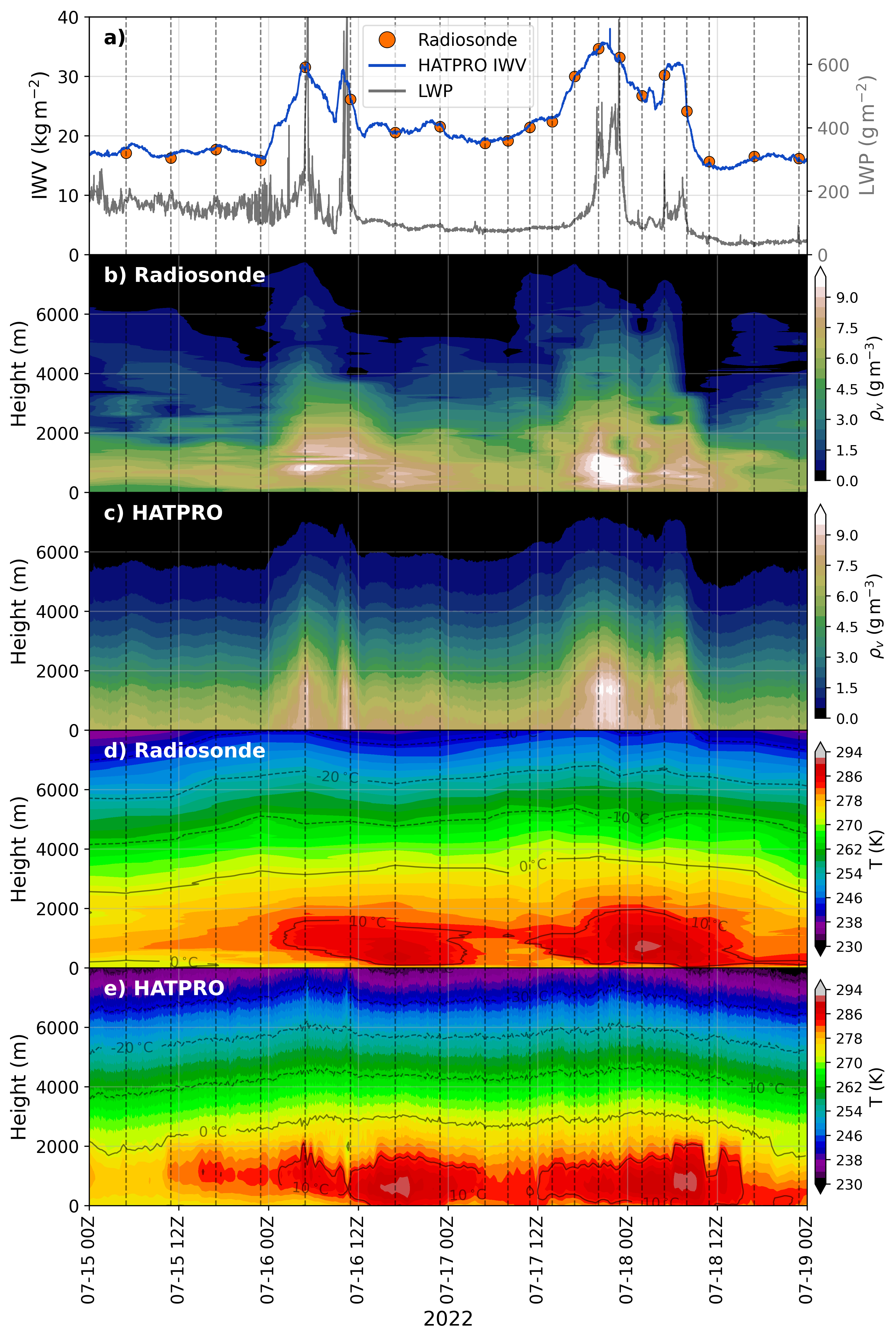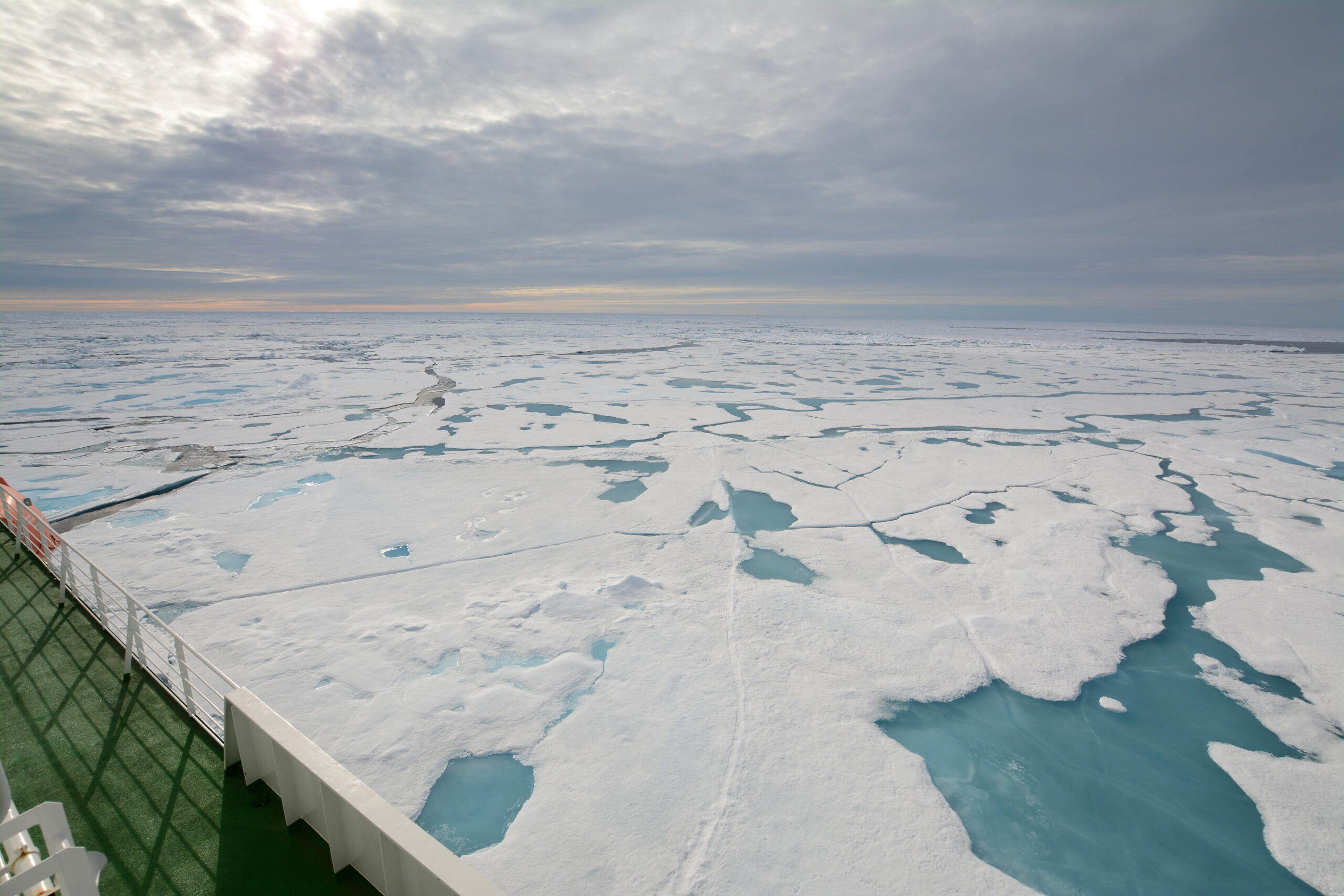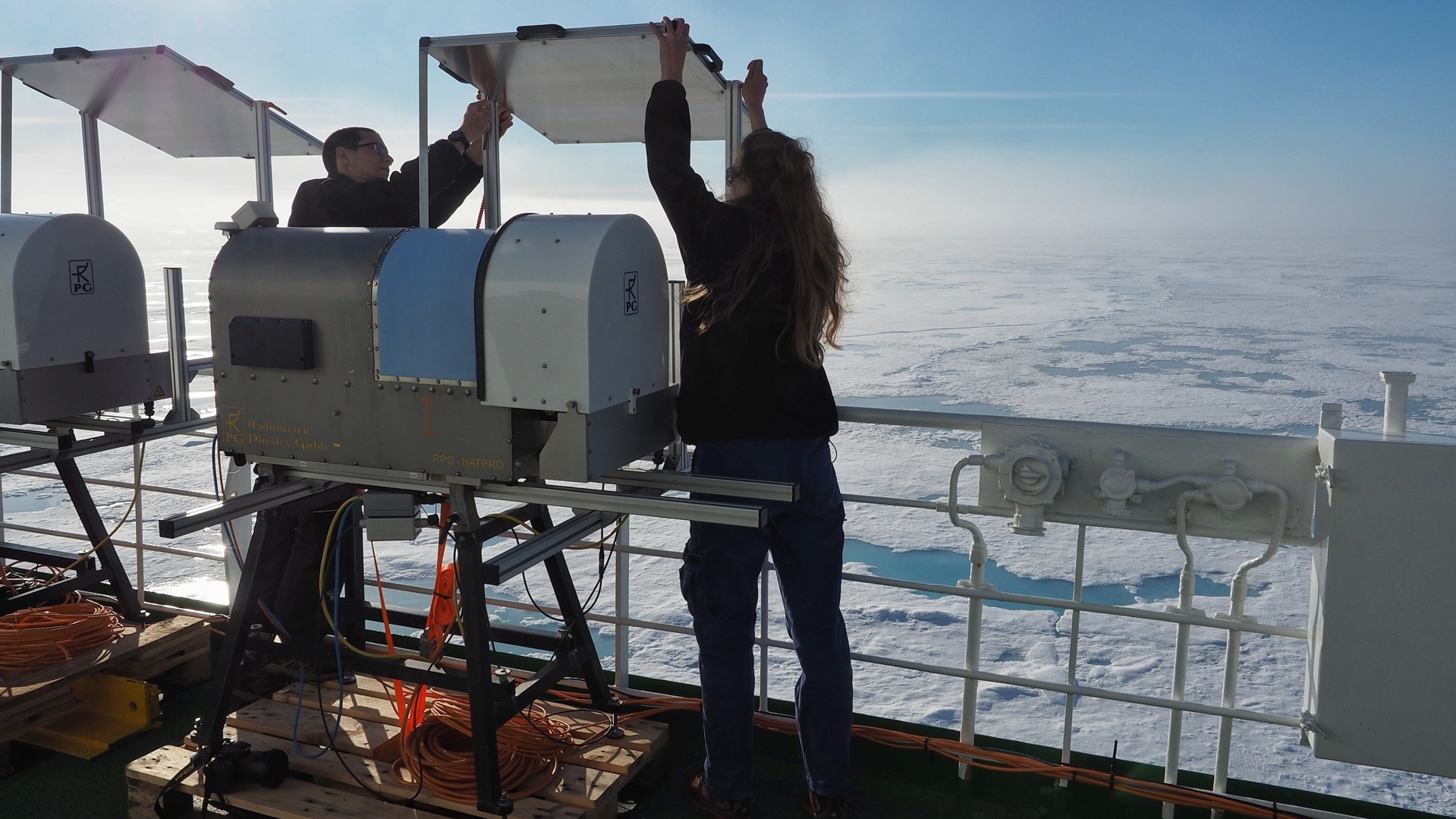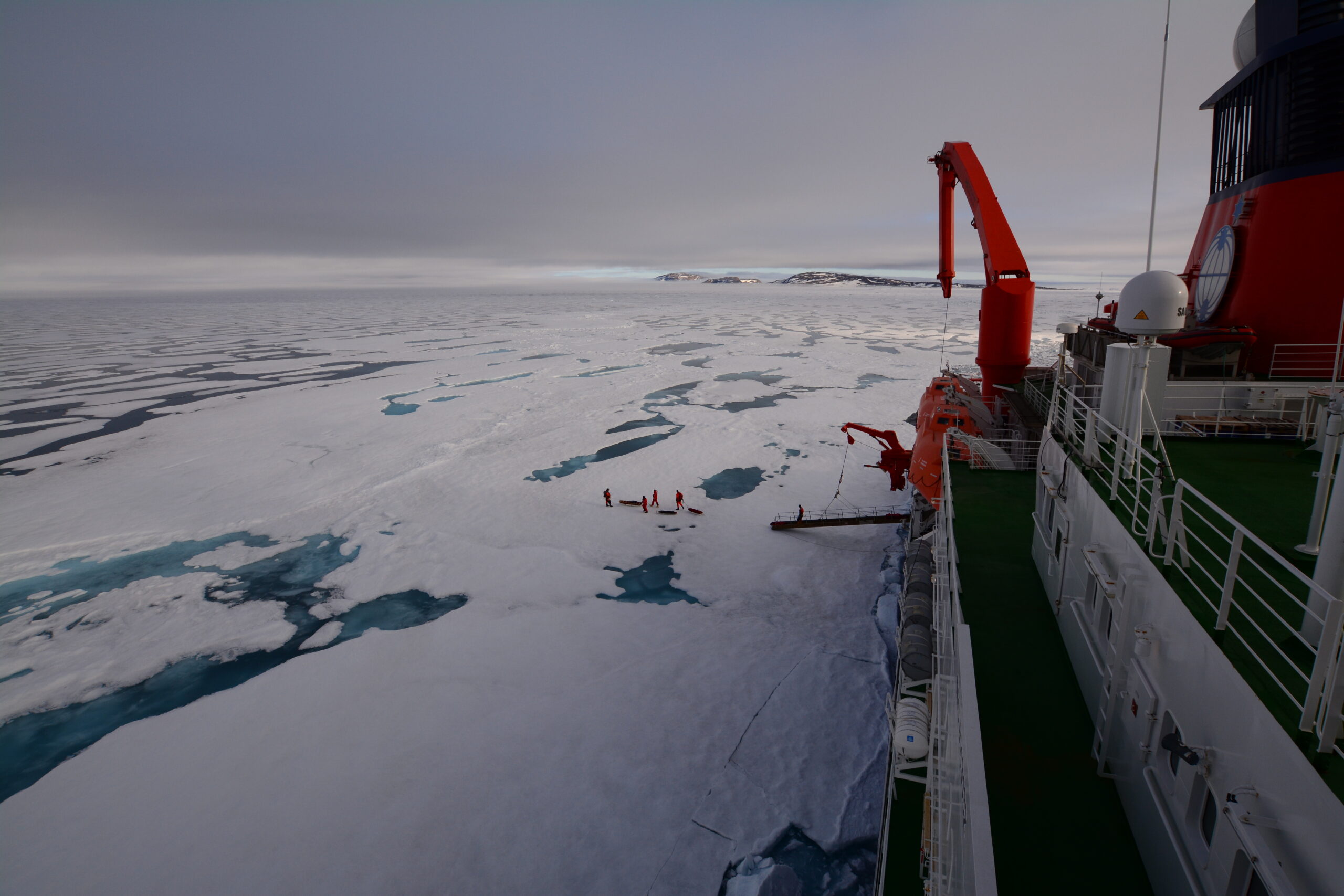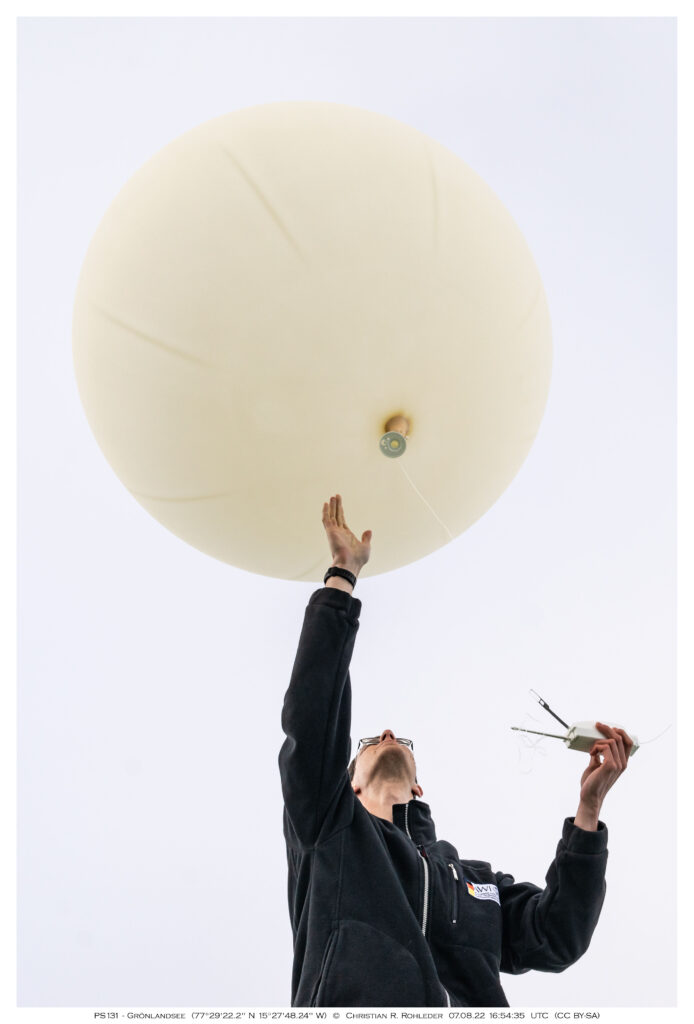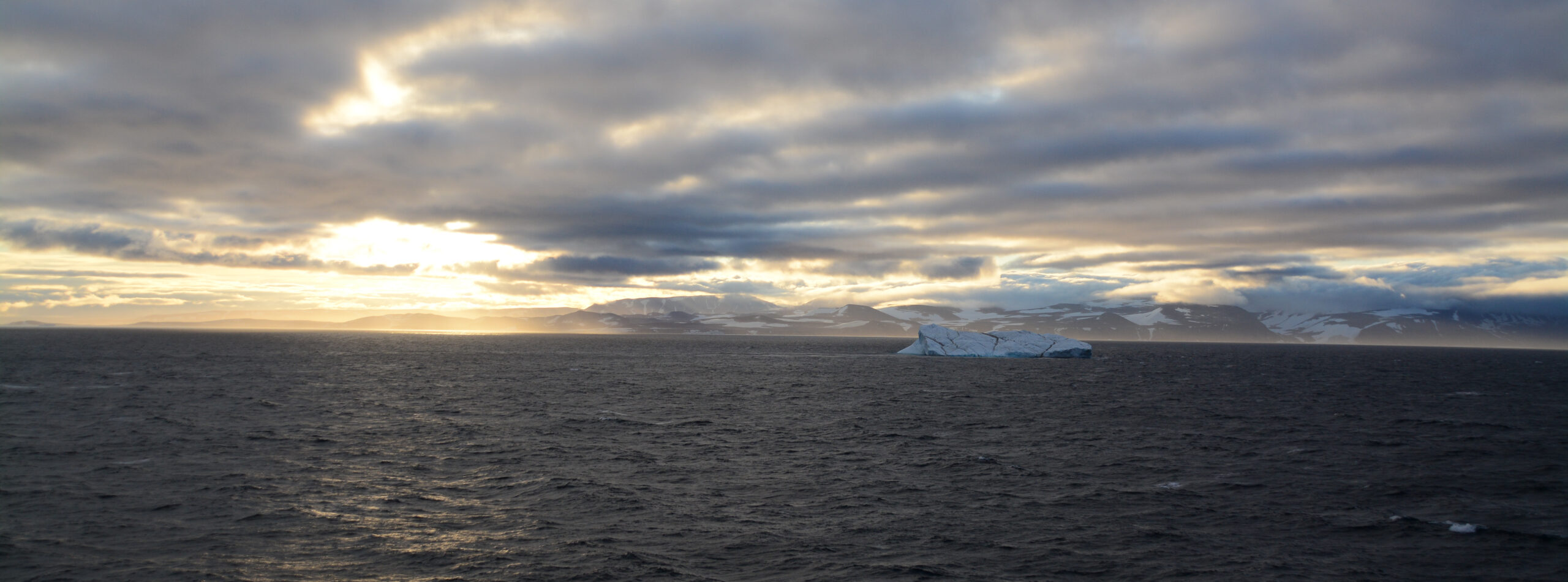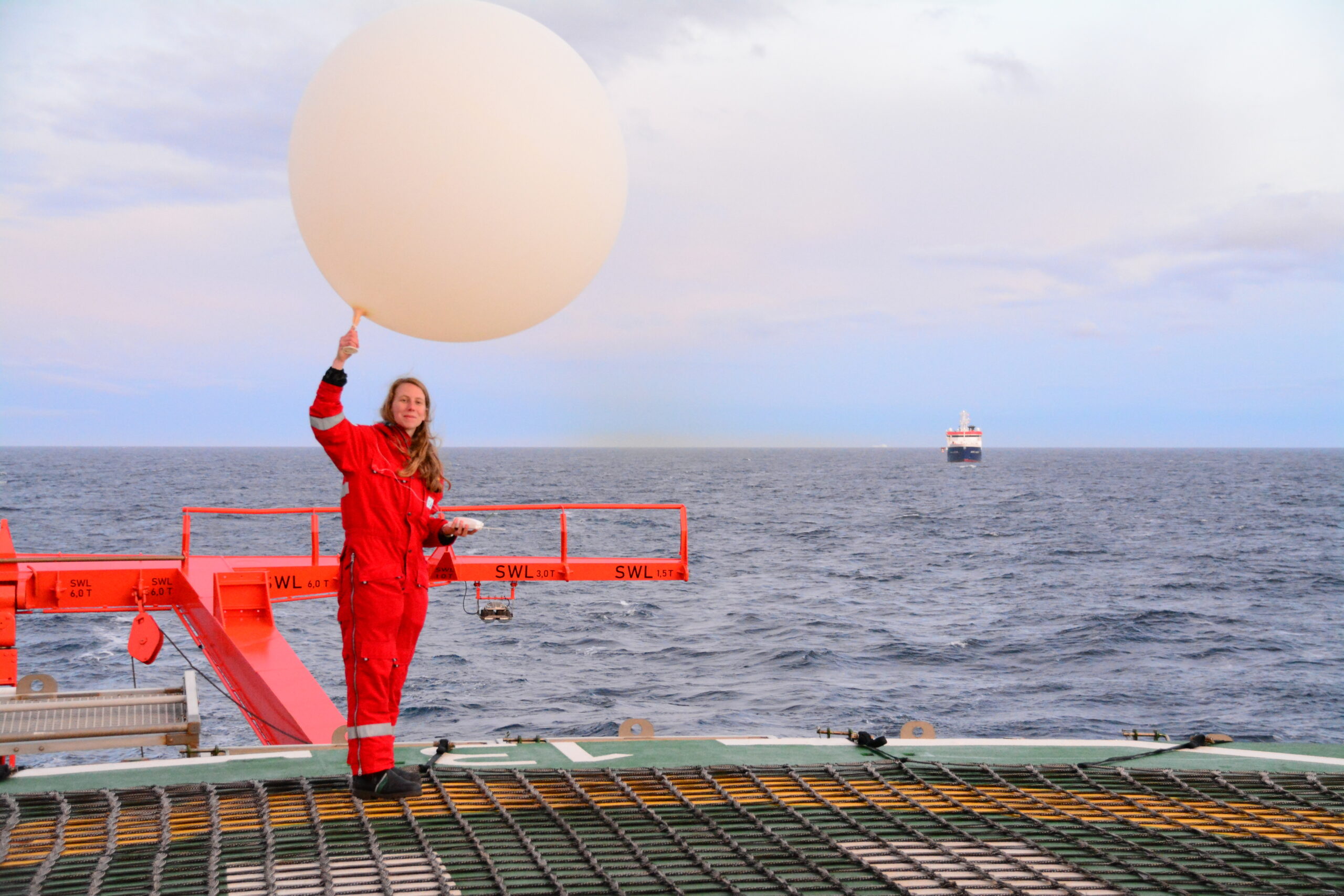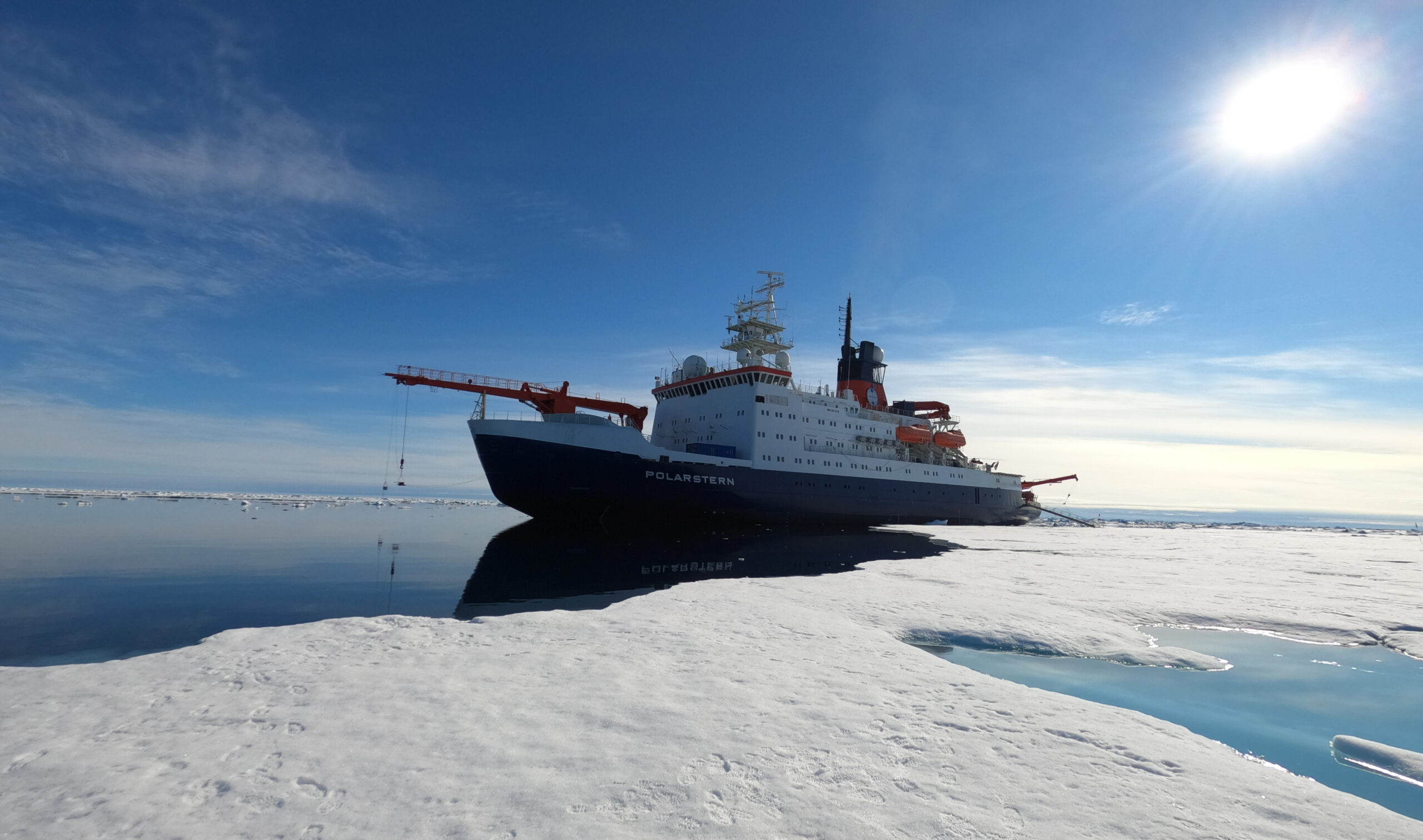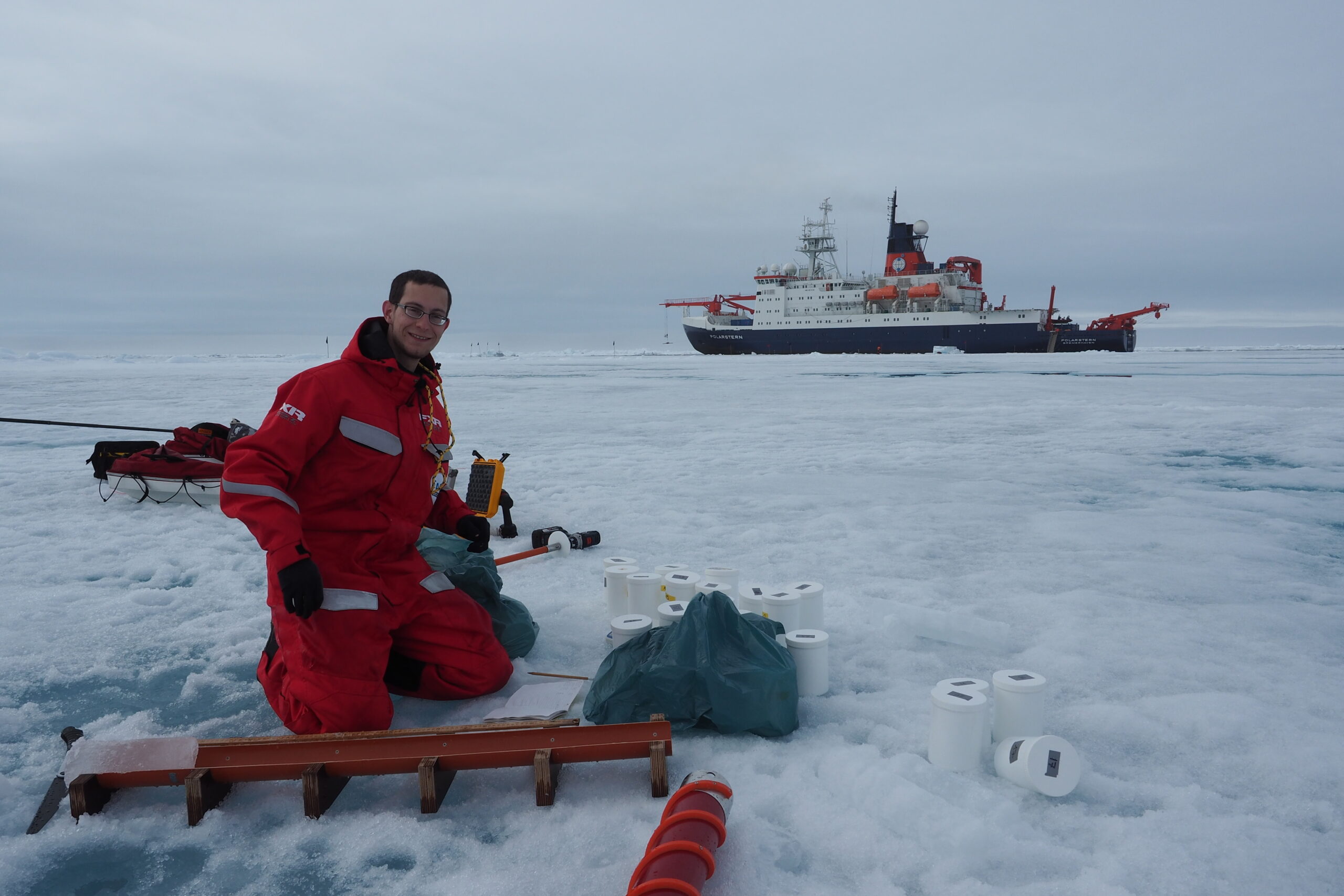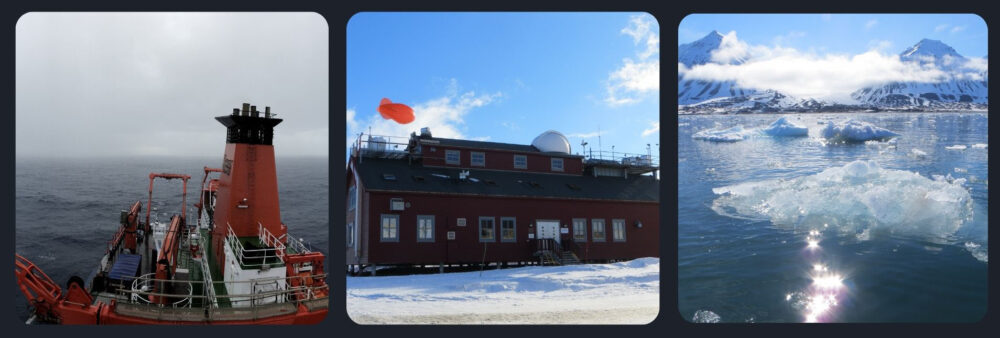Polarstern cruise PS131 (ATWAICE) was a multidisciplinary expedition to investigate sea ice melting processes in the warming Arctic, ocean currents affecting nutrient supply for flora and fauna, ocean impacts on the melt of glaciers at Greenland’s east coast, and to deploy seismometers at the Aurora Vent Field. The expedition started on 28th June 2022 in Bremerhaven and led us to the Fram Strait, the marginal sea ice zone north-west of Svalbard, to fast ice at the east coast of Greenland and to Scoresby Sund, before returning to Bremerhaven on 17th August 2022.
Our working group also joined the expedition with atmospheric measurements using microwave radiometers (HATPRO and MiRAC-P) and radiosondes (weather balloons). The microwave radiometers faced the sky and primarily measured radiation emitted by the atmosphere (oxygen, water vapor, and liquid droplets). An additional sky camera consisting of a GoPro Hero 10 Black and an infrared sensor was mounted next to the radiometers on the guard rail of Polarstern to give us information about the sky conditions.
From the HATPRO data, we could already retrieve preliminary temperature and humidity profiles, as well as the total amount of water vapor (known as Integrated Water Vapour or IWV) and cloud liquid water path (LWP) with a high temporal resolution (1 second). Complementary to the radiometers, radiosondes give us high vertical but low temporal resolution of temperature and humidity profiles. An example of this is shown for an extraordinary warm and moist air intrusion event from 15th to 19th July 2022. IWV peaked at 35 kg m-2 (comparable to mid-latitude summer conditions), and the temperatures reached more than 18 °C at a few hundred meters altitude.
With a mirror construction designed by Pavel Krobot and Rainer H.-Lind and attached to the radiometers, we could also directly observe the radiation emitted by the sea ice and ocean. These measurements will later be compared to skin temperature measurements of the sea ice taken by an infrared camera to estimate the sea ice emissivity. Another GoPro is also mounted on the infrared camera to provide a visual context of the sea ice conditions.
